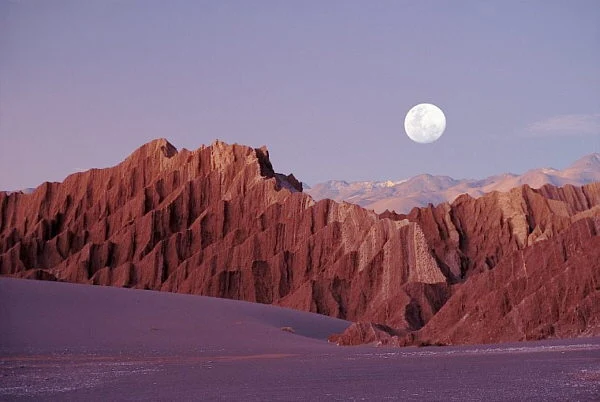 |
There are many places on Earth with supernatural landscapes. One of them can be called Valle de la Luna, which means "Valley of the Moon" in Chile. His majestic lifeless paintings are reminiscent of the panoramas of Mars transmitted by interplanetary stations.
Valle de la Luna is part of the Chilean Atacama Desert, the driest desert on our planet and, apparently, the best part to observe its landscapes. Local guides advise to go there to watch the sunset when the sky starts to change color strangely or, especially, on a full moon night, when the landscapes seem more mysterious in the moonlight.
 |
| Valle de la Luna Chile |
Geologically, the Valle de la Luna, is surrounded by hills and half a kilometer high, it rests on a huge layer of rock salt. Infrequent rains and winds corrode and gradually spread the salt substrate and mineral layers above it, sometimes forming bizarre shapes. Local shamans in figures of salt and stone can communicate with spirits.
On the surface of the valley there are dry lakes covered with a thin crust of salt crystals. When the lighting changes, they change their shadows, creating unique photos each time.
There are also large sand dunes in the Valle de la Luna.
 |
| Valle de la Luna Chile |
Valle de la Luna is included in the Los Flamencos Nature Reserve (Los Flamencos National Reserve, "Flamingo National Reserve")
.
Valle de la Luna is one of the main attractions in northern Chile. Usually tourists combine a "landscape" trip with an archaeological excursion to the village of Tulor, where you will find some of the most important and oldest monuments from Chile's pre-Columbian era.
"Lunar landscapes" became one of Chile's trademarks and even won postage stamps.